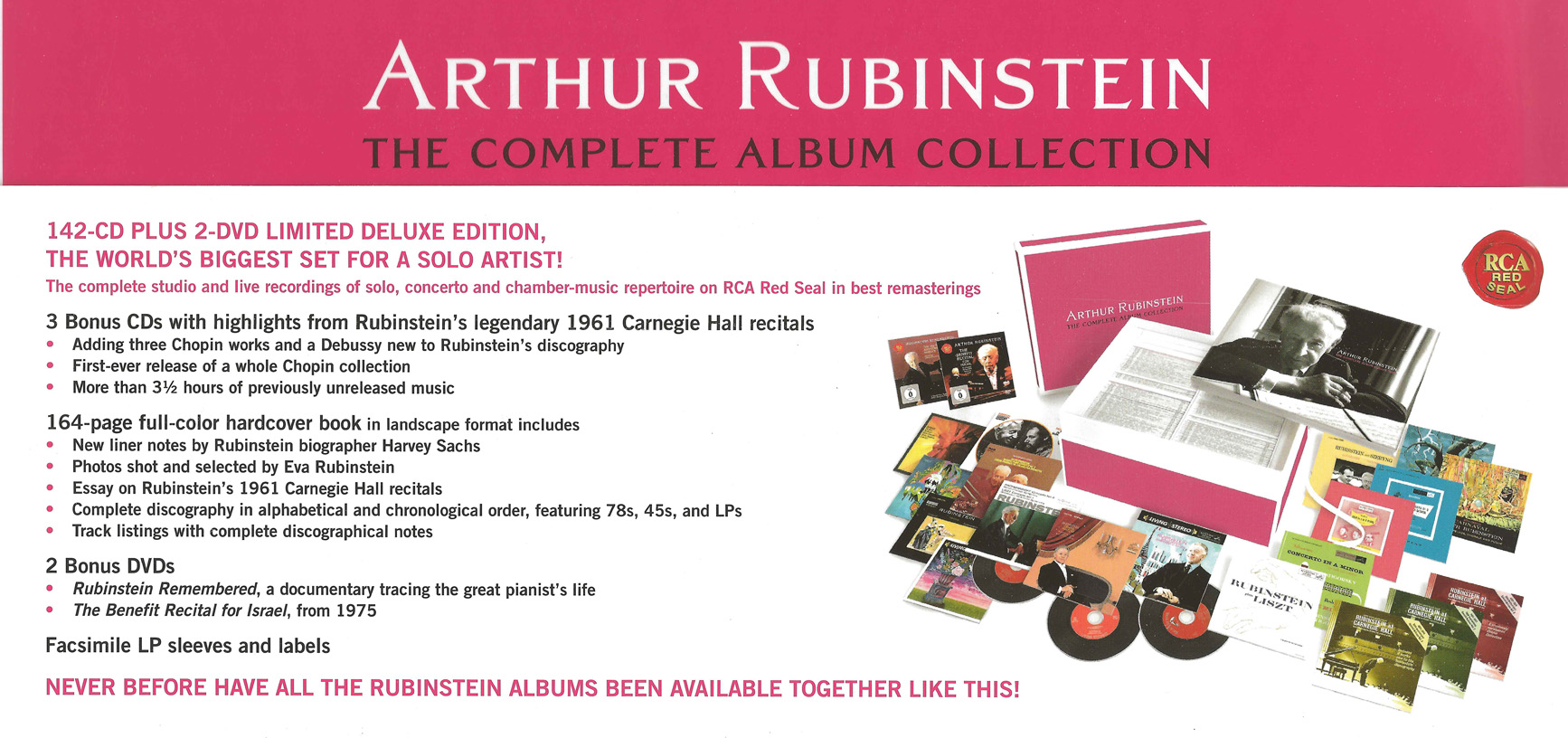Ludwig van Beethoven
Sonata for Piano and Violin No.5 in F major, op.24, “Spring Sonata”
Media Review / Comparison
2011-12-22 — Original posting (on Blogger)
2013-07-05 — New standard layout applied
2014-05-10 — Added reference to CD from Rubinstein Album Collection
2014-10-31 — Re-posting as is (WordPress)
2016-06-23 — Brushed up for better readability
Table of Contents
- Introduction
- The Movements
- Comments on the Interpretations
- Yehudi Menuhin, Wilhelm Kempff (1970)
- Arthur Grumiaux, Clara Haskil (1957)
- Henryk Szeryng, Arthur Rubinstein (1958)
- David Oistrakh, Lev Oborin (1962)
- Itzhak Perlman, Vladimir Ashkenazy (1975)
- Adolf Busch, Rudolf Serkin (1933)
- Renaud Capuçon, Frank Braley (2009)
- Gidon Kremer, Martha Argerich (1987)
- Isabelle Faust, Alexander Melnikov (2008)
- Addendum
Introduction
This is another note on the recordings of Beethoven’s sonatas for piano & violin in my music collection, about the sonata in F major, op.24, “Spring Sonata”. See also the summary on the postings covering Beethoven’s Sonatas for Piano & Violin.
Below you find my comments on the recordings that I have for the Sonata for Piano and Violin No.5 in F major op.24, “Spring Sonata” by Ludwig van Beethoven (1770 – 1827). References to the recordings are given in each of the sections below. Here’s a short list of the recordings in this comparison, in alphabetic order:
- Adolf Busch & Rudolf Serkin (1933)
- Renaud Capuçon & Frank Braley (2009)
- Isabelle Faust & Alexander Melnikov (2008)
- Arthur Grumiaux & Clara Haskil (1957)
- Gidon Kremer & Martha Argerich (1987)
- Yehudi Menuhin & Wilhelm Kempff (1970)
- David Oistrakh & Lev Oborin (1962)
- Itzhak Perlman & Vladimir Ashkenazy (1974)
- Henryk Szeryng & Arthur Rubinstein (1958)
The Movements
The movements in this sonata are
- Allegro (4/4)
- Adagio molto espressivo (3/4)
- Scherzo: Allegro molto (3/4) — Trio (3/4)
- Rondo: Allegro ma non troppo (alla breve, 2/2)
The (measured) metronome numbers are approximate values only.
Comments on the Interpretations
Yehudi Menuhin, Wilhelm Kempff (1970)
Beethoven, The Complete Violin Sonatas, Vol.1: Sonatas opp.12, 23, 24; Rondo in G, WoO 41; 12 Variations on “Se vuol ballare” from “Le nozze di Figaro”
Yehudi Menuhin, Wilhelm Kempff
DGG 459 433-2 (stereo, 2 CD); ℗ 1970

Yehudi Menuhin and Wilhelm Kempff (1970) — for CD information and general see op.12/1
Comments on the Performance
- 10’31”; 1/4 = 124 – 144
A clumsy interpretation. The articulation is sometimes inaccurate, and I found some tempo discontinuities. - 6’24”; 1/4 = 37
This lacks poetry, does not keep tension and intensity. Lots of sustain pedal. - 1’31”; 3/4 = 67 / 77 (Trio)
To me, this lacks wittiness! - 7’27”; 1/2 = 68
Too slow, even clumsy (where is the alla breve?)
| Recommendation: | No |
| Rating: | 1.2 (1 / 2 / 1 / 1) |
Arthur Grumiaux, Clara Haskil (1957)
Beethoven: Violin Sonatas, Complete (opp. 12, 23, 24, 30, 47, 96)
Brilliant Classics 93329 (mono, 3 CD); licensed from Decca

Arthur Grumiaux and Clara Haskil (1957) — for CD information and general comments see op.12/1
Comments on the Performance
- 10’14”; 1/4 = 124 – 144
The violin is so dominant in the sound that it often covers the piano. - 5’29”; 1/4 = 42
The slightly faster tempo is easier on the melody. Clara Haskil uses lots of pedal, the piano isn’t always clear. The violin is way too strong, often covering the piano. - 1’06”; 3/4 = 88 / 94 (Trio)
Not the best coordination in the Scherzo, the Trio is better (thanks to Grumiaux’ sound!) - 6’11”; 1/2 = 86
This movement offers at least some opportunities for the piano to “show off” / expose itself. Bjut this only lasts until the violin starts its part: Grumiaux is pretty cruel when he dominates the sound by playing accompanying sections ff and legatissimo — not a chance for the piano in these segments!
| Recommendation: | No |
| Rating: | 2.2 (2 / 2 / 3 / 2) |
Henryk Szeryng, Arthur Rubinstein (1958)
Beethoven: Violin Sonatas Nos. 5, 8, 9 (opp.24, 30/3, 47)
Henryk Szeryng, Arthur Rubinstein (1958)
RCA Victor / BMG 09026 63040-2 (stereo); ℗ / © 2003

Arthur Rubinstein — The Complete Album Collection
CD #70: Beethoven: Kreutzer & Spring Sonatas
Arthur Rubinstein, Henryk Szeryng (1958)
SONY Classical 88691936912 (142 CDs / 2 DVDs, mono / stereo); ℗ / © 2011
Documentation 162 pp., track listing on CD sleeve

Henryk Szeryng and Arthur Rubinstein (1958): 30, 40 years ago I used to like Szeryng’s recordings. Now, I have problems understanding why… my taste must have changed!
Comments on the Performance
- 7’13” (exposition not repeated); 1/4 = 124 – 144
The articulation often sounds a bit mechanic (violin). The second theme is suddenly faster; this by itself is legitimate — but that tempo change is not introduced properly and sounds like a cut / recording error. Also, there are a couple of intonation issues in the violin. - 5’26”; 1/4 = 44
The violin is sometimes too loud, the vibrato too nervous; perhaps too fast; the piano often drops the tension (at a small scale, i.e., within the phrases); sometimes a bit superficial. - 1’09”; 3/4 = 88 / 93 (Trio)
Violin too broad, rushing sometimes, occasionally marginal intonation - 6’27”; 1/2 = 88 (+/-)
Pretty coarse in both instruments, the articulation is not careful, the vibrato too strong and nervous, excessive tempo variations / instabilities.
| Recommendation: | No |
| Rating: | 2.2 (3 / 2 / 2 / 2) |
David Oistrakh, Lev Oborin (1962)
Beethoven: The Sonatas for Piano and Violin (opp. 12, 23, 24, 30, 47, 96)
Philips 468 406-2 (stereo, 4 CD); ℗ 2001

David Oistrakh and Lev Oborin (1962) — for CD information and general comments see op.12/1
Comments on the Performance
- 10’13”; 1/4 = 128 – 136
As with the preceding sonatas, this recording has severe limitations in the sound. But otherwise it is OK. The dynamic range appears rather limited (as if they didn’t dare playing ff) — but this could also be a recording issue. - 6’05”; 1/4 = 37 (+/-)
The tempo is at the lower limit for the melody (but other interpretations have the same problem). Oborin uses less pedal, and he is more transparent than others. The violin is singing, though with a fair amount of vibrato. I notice a loss of tension towards the end. - 1’20”; 3/4 = 78 / 89 (Trio)
Somewhat stiff, especially in the piano. - 7’08”; 1/2 = 72
Pretty slow, the piano is heavy, “wooden”, stiff — and it’s not witty at all.
| Recommendation: | No |
| Rating: | 2.2 (2 / 3 / 2 / 2) |
Itzhak Perlman, Vladimir Ashkenazy (1975)
Beethoven: The Violin Sonatas, Complete (opp. 12, 23, 24, 30, 47, 96)
Itzhak Perlman, Vladimir Ashkenazy
Decca 421 453-2 (stereo, 4 CD); ℗ 1974 / © 1988

Itzhak Perlman and Vladimir Ashkenazy (1975) — for CD information and general comments see op.12/1
Comments on the Performance
- 9’55”; 1/4 = 128 – 150
Good, fulfills “common expectations”, no more. - 6’28”; 1/4 = 37
Somewhat overblown for my taste, with lots of pedal in the piano. The interpretation is creating a somewhat monotonous sound carpet. It lacks tension in some parts. - 1’14”; 3/4 = 87 / 91 (Trio)
OK, good tempo! - 6’50”; 1/2 = 76
Another sumptuous movement by Perlman: lots of legato, broad. The piano is often fairly massive, but the tempo is about OK (at the lower limit). I don’t like some of the tempo variations / alterations, though.
| Recommendation: | No |
| Rating: | 3.2 (3 / 3 / 4 / 3) |
Adolf Busch, Rudolf Serkin (1933)
Beethoven: Violin Sonatas (opp. 12/3, 24, 47), Historical Recordings 1931 – 1941
Naxos 8.110954 (mono); iTunes download

Adolf Busch and Rudolf Serkin (1933) recorded this sonata in 1933. For additional remarks see op.12/3.
Comments on the Performance
- 6’46” (exposition not repeated); 1/4 = 140 – 156
Good, dramatic, and faster than all others, but with a clear concept. Overall, this is an excellent, if not amazing recording, given its age of almost 80 years! - 6’08”; 1/4 = 37
Uses less pedal than Ashkenazy or Kempff. The middle part is slightly faster. This makes it easier not to drop the tension. - 1’12”; 3/4 = 87 / 95 (Trio)
OK - 6’27”; 1/2 = 82
Excellent coordination between the artists. An amazing recording, given its age!
| Recommendation: | Why not, as second recording? |
| Rating: | 3.5 (4 / 3 / 3 / 4) |
Renaud Capuçon, Frank Braley (2009)
Beethoven: Complete Sonatas for Violin & Piano (opp. 12, 23, 24, 30, 47, 96)
Virgin Classics LV 7873 (stereo, 3 CD); ℗ / © 2010


Renaud Capuçon and Frank Braley (2009) — for CD information and general comments see op.12/1
Comments on the Performance
- 9’53”; 1/4 = 124 – 150
Transparent, dramatic, expressive — a good interpretation! For my feeling, the repeated chords in the piano (second theme) could be slightly more regular, controlled. - 5’53”; 1/4 = 38
The tempo is better than with Kremer / Argerich. A good performance, keeping the tension throughout the movement! - 1’09” (last repetition omitted); 3/4 = 85 / 93 (Trio)
Good, witty! - 6’39”; 1/2 = 78
A fairly good interpretation; the piano is more transparent than with Argerich. The coordination / tuning between the artists could be better. For example, at the beginning of the movement, Braley plays pairs of eighths inégales, almost like a baroque acciaccatura. I would accept that (even if it is historically incorrect) if the violinist would do the same — but he doesn’t!
| Recommendation: | Yes, though there are better alternatives. |
| Rating: | 4.0 (4 / 4 / 4 / 4) |
Gidon Kremer, Martha Argerich (1987)
Beethoven: Violin Sonatas Nos. 4 & 5 (opp. 23, 24)
DG 419 787-2 (stereo); ℗ / © 1987

Gidon Kremer and Martha Argerich (1987) — for CD information and general comments see op.12/1
Comments on the Performance
- 9’43”; 1/4 = 120 – 146
An excellent, dramatic and expressive interpretation. Similar to Szeryng / Rubinstein, they also take the second theme somewhat faster. However, here, that tempo change is not abrupt, but introduced properly. Martha Argerich uses the descending piano scale to accelerate, and to prepare for the second theme. It all feels “natural”, the tempo change is almost unnoticeable. Another little detail: this is the only interpretation where I noticed the piano acciaccatura at the beginning of the coda — the violin holds back for a split second! - 6’05”; 1/4 = 37
The tempo is at the lower limit, but the interpretation features excellent phrasing & agogics. - 1’21”; 3/4 = 78 / 89 (Trio)
Kremer’s “airy” sound doesn’t really help here! - 6’34”; 1/2 = 76
Lively, dramatic, with long phrases, supported by agogics. The transparency is OK, could still be better, though.
| Recommendation: | Yes |
| Rating: | 4.2 (5 / 4 / 4 / 4) |
Isabelle Faust, Alexander Melnikov (2008)
Beethoven: Complete Sonatas for Piano & Violin (opp. 12, 23, 24, 30, 47, 96)
Isabelle Faust, Alexander Melnikov
Harmonia mundi HMC 902025.27 (stereo, 3 CD + 1 CD/DVD); ℗ 2009

Isabelle Faust and Alexander Melnikov (2008) — for CD information and general comments see op.12/1
Comments on the Performance
- 9’50”; 1/4 = 124 – 150
Clearly, this is the interpretation with the most life and detail: careful articulation, small-scale agogics, very nice the little, split-second hesitations for emphasizing notes, accents. - 5’47”; 1/4 = 40
A perfect match between the two artists in agogics, rhythm, and phrasing. A clear advantage of playing with very little vibrato: sound balance and transparency are far easier to maintain, the violin has no need to “overcharge the sound”. - 1’10”; 3/4 = 92 / 98 (Trio)
Perfect! Fast, witty, joyful, yet accurate / precise — and playing out some serious jokes in the repetition of the Scherzo. I’m sure at Beethoven’s time people have been smiling, if not laughing when hearing that movement! Modern ears are too much “worn out” to understand such jokes. Thank you so much, Isabelle and Sasha, for restoring this opportunity for true fun and enjoyment; this is absolutely admirable! - 6’20”; 1/2 = 82
Once more — simply excellent! More than any of the other artists, these two have carefully considered which voice is the principal melody, and which part is “just” accompaniment (and for sure, the violin often is just accompaniment, Mr. Grumiaux!!!). And in those latter sections, it is amazing how well the violin can be heard playing p or pp (without vibrato, of course), even though the piano plays forte, and the violin is using the G-string only…
| Recommendation: | YES, YES, YES! |
| Rating: | 5.0 (5 / 5 / 5 / 5) |
Addendum
If you are not an active pianist or violinist, you might want to follow this music using a pocket score. These typically come in two volumes:
- Sonatas op.12/1 – 3, op.23, op.24 —Find pocket score (Kalmus) on amazon.com (#ad) —
- Sonatas op.30/1 – 3, op.47, op.96 —Find pocket score (Kalmus) on amazon.com (#ad) —
While musicians, of course, prefer a full size score edition, such as Henle’s, also in two volumes:
- Sonatas op.12/1 – 3, op.23, op.24 —Find full score (Henle) on amazon.com (#ad) —
- Sonatas op.30/1 – 3, op.47, op.96 —Find full score (Henle) on amazon.com (#ad) —





















